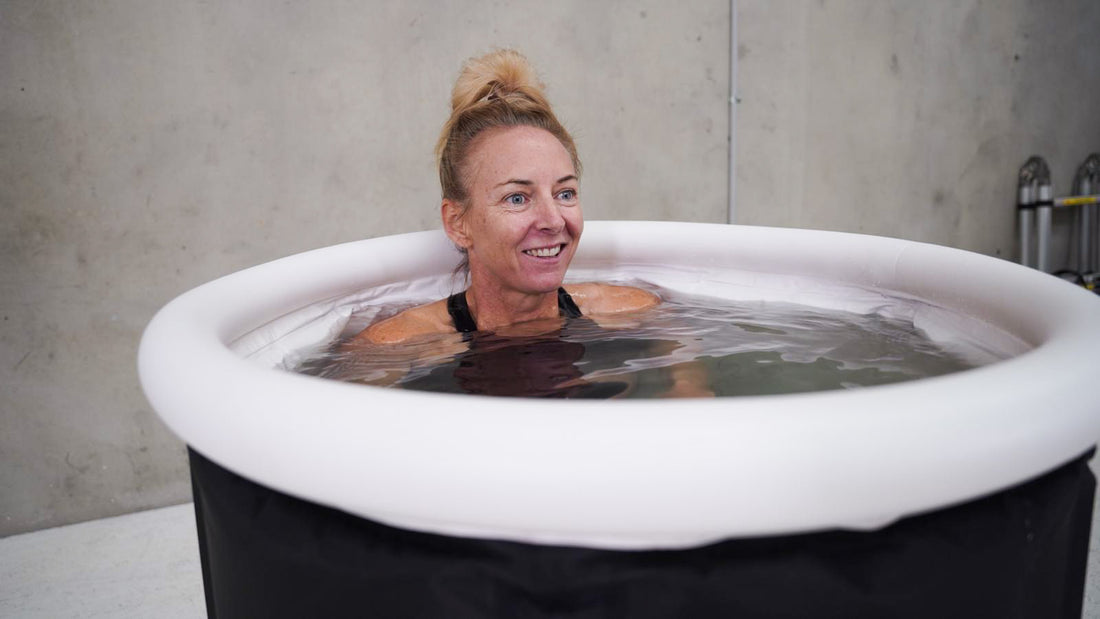Cold therapy is an ancient practice, with documented uses of it dating back to ancient Greece. Hippocrates and Plato, leaders in the world of modern medicine and philosophy at the time, were among the first to study the effects of hot and cold water while documenting their benefits for scientific purposes.
Nowadays, most sports use cold therapy to improve muscular recovery and, in turn, increase performance.
So how does cold therapy work? Let’s talk about hormesis…
Hormesis is a biological response to mild stressors that creates an adaptive stress response.
An example of hormesis that most would be familiar with is exercise. We should be doing 2.5 to 5 hours of moderate intensity physical activity, or 1.25 to 2.5 hours of vigorous intensity physical activity or an equivalent combination per week (1). While exercise is healthy, doing 5 hours of intense exercise per day wouldn’t be. Same goes for being in an ice bath for a long time (>15 minutes), because hypothermia is a serious risk. With just enough exposure of the cold stressor, we gain the physiological benefits without putting ourselves at risk.
As we immerse into cold water, our muscles tighten up and our blood vessels constrict (vasoconstriction) which sends the blood out of our extremities and to our vital organs. Our blood glucose increases, and so our insulin levels drop and our blood pressure and heart rate increase (2). This cold exposure induces a range of acute physiological responses, referred to as the cold shock response. Some of the cold shock proteins improve our DNA and RNA health by promoting cell survival and activating antioxidant enzymes, which may also be neuroprotective (3).
Cold therapy works best in water because the thermal conductivity of water is 25 times greater than air. By immersing ourselves into a pool of cold water (10-15 degrees), we lose our body heat up to 5 times quicker in water compared to the same temperature in air. (4)
The ‘iceman’ Wim Hof and other cold therapy training methods recommend starting in an ice bath for about 2 minutes and repeating the process 2-3 times. With repeated exposure the body adapts to the cold, diminishing some of the cold shock response (5) and leaves us with good physiological acclimatization.
While more evidence is needed to understand dosage and timing of cold therapy after exercise for muscle recovery, there have been plenty of scientific discussions on how cold therapy can improve glucose and lipid metabolism, decrease inflammation, enhance immune function, and improve cognitive performance. So in short, you don’t have to be an elite athlete to reap the benefits of cold therapy. There are plenty of benefits of fitting cold therapy practice into your regular routine not only for performance, but also for improved mood and cognition, decreasing inflammation and improving health.
References:
- Australian Government Department of Health. (2021, May 10). For adults (18 to 64 years). Australian Government Department of Health. Retrieved March 26, 2022, from https://www.health.gov.au/health-topics/physical-activity-and-exercise/physical-activity-and-exercise-guidelines-for-all-australians/for-adults-18-to-64-years
- Brown, D. J. A., Brugger, H., Boyd, J., & Paal, P. (2012). Accidental hypothermia. New England Journal of Medicine, 367(20), 1930–1938. https://doi.org/10.1056/nejmra1114208
- Castellani, John W., and Andrew J. Young. Human physiological responses to cold exposure: Acute responses and acclimatization to prolonged exposure Autonomic Neuroscience 196 (April 2016): 63–74. https://doi.org/10.1016/j.autneu.2016.02.009
- Chip, Sophorn, Andrea Zelmer, Omolara O. Ogunshola, Ursula Felderhoff-Mueser, Cordula Nitsch, Christoph Bührer, and Sven Wellmann. The RNA-binding protein RBM3 is involved in hypothermia induced neuroprotection Neurobiology of Disease 43, no. 2 (August 2011): 388–96. https://doi.org/10.1016/j.nbd.2011.04.010.
- Tipton, M. J., F. S. C. Golden, C. Higenbottam, I. B. Mekjavic, and C. M. Eglin. Temperature dependence of habituation of the initial responses to cold-water immersion European Journal of Applied Physiology 78, no. 3 (July 1998): 253–57. https://doi.org/10.1007/s004210050416

